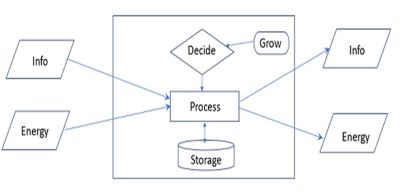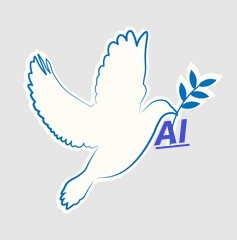

Placed on LinkedIn: April 22, 2024
Keywords: Generative AI, Peace, Autonomous, Living, Multi-Agent Models
If we leave industrial process control, then autonomy remains topical, particularly for military technology. Kissinger et al., in “The Age of AI: Our Human Future” write:
For as long as history has been recorded, security has been the minimum objective of an organized society. …. Beyond AI-enabled defense systems lies the most vexing category of abilities – lethal autonomous weapon systems.The book states that many states have demonstrated AI weapons for a new kind of war, and no one has policies to maintain a balance of powers.

To define living systems (LS) let us turn to physics and organizational science. In our universe the energy becomes increasingly disordered. However, pockets of increased order can occur so long as they contribute to greater disorder overall, which is what living systems (LS) do. LS consume energy to create order for themselves at the expense of a net decrease in order in the universe.

Billions of years ago from the earth’s primordial broth arose complex molecules and then cells. Cells are the first LS; their salient characteristics include a cell membrane through which energy and information enter and exit the cell. This energy and information are transported to and from a processing center that bi-directionally connects with storage and is controlled by a decision process (see Figure). A grow-and-reproduce center drives the decision process. At a different level of abstraction, LS have models of their external and internal environment and are able through trial-and-error to evolve these models to maximize their ability to grow and reproduce.
Cells evolved into multicellular organisms with the same LS attributes of cells. These multicellular organisms have constituted an increasingly complex lineage that pinnacled in its biological form in humans. However, humans managed a non-biological, evolutionary feat as they evolved from families, to clans, to tribes, to endless varieties of complex organization, and to states – all as Living Systems. While the Walmart business or the Catholic church has more employees than some states have people, a state has one unique distinction that no other organization possesses, and that is the legal authorization to kill through police or military.

What is the problem of our trajectory of success in evolving greater, more powerful organizations? Warfare has been its constant. States have marked the end of the road in our evolution of more sophisticated organizations. Not enough states and time exist for adequate experimentation to create a new species of organization that includes states as a component. States appreciate AI as a new power that they need to control. What next?
In the MIT Technology Review of July 14, 2023, Mustafa Suleyman (now CEO of Microsoft AI) wrote:
To pass the Modern Turing Test, an AI would have to successfully act on this instruction: ‘Go make $1 million on a retail web platform in a few months with just a $100,000 investment.’ …It would need to research and design products, interface with manufacturers and logistics hubs, negotiate contracts, create, and operate marketing campaigns.Suleyman’s system has life-like characteristics but remains at the mercy of warring states. How would AI innovators cooperate with states to develop new states that preserve peace?
